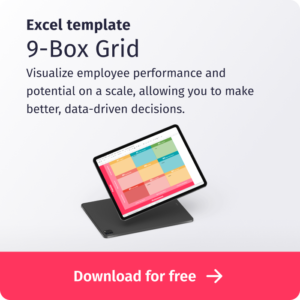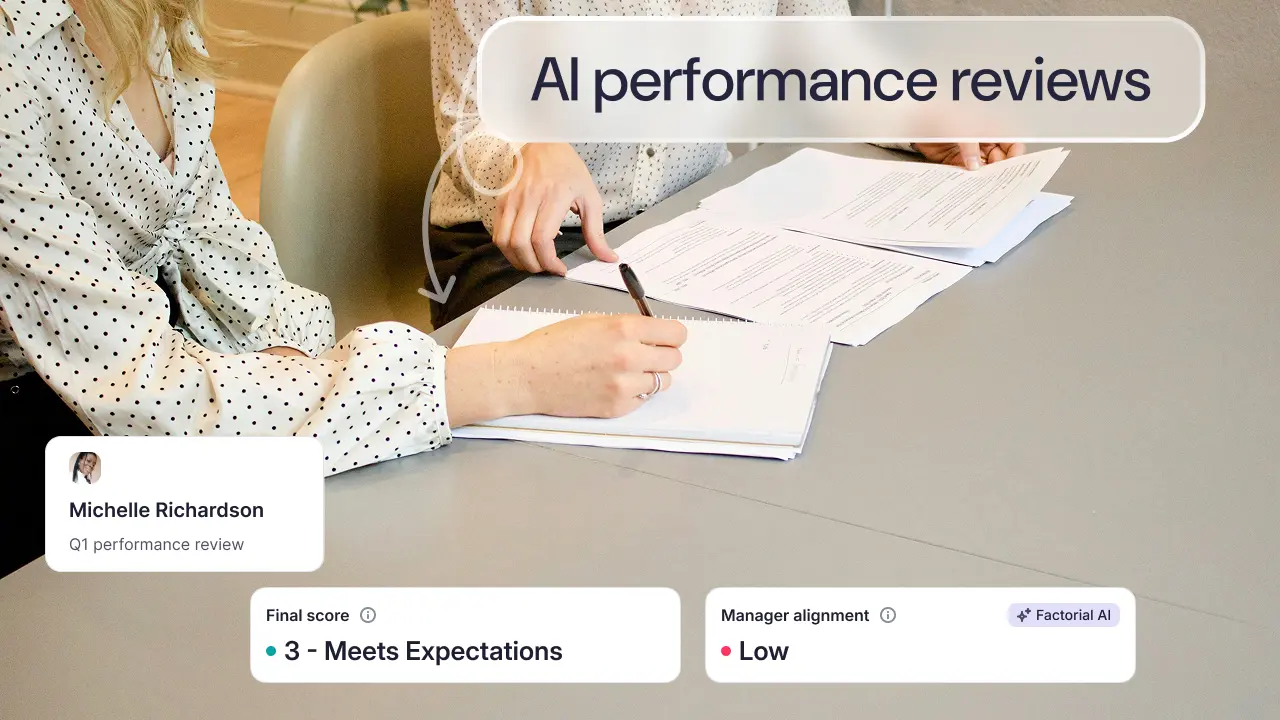We have entered a new digital era: The Age of Digitalization. Businesses all around the world are beginning to embrace advances in Big Data technologies and AI to improve their business processes and streamline their workflows. However, despite this fact, according to a global research study conducted by Workday, 48% of professional services firms agree that their KPIs are still not reflective of the digital era in which we are now operating.
Organizations need to catch up if they are to stay relevant and competitive.
With this in mind, in today’s post, we are going to share 10 top tips to help you digitize your business processes and develop a productive digital culture in your business. We will also share some of the benefits of digitalization to help you understand why this transformation is so important for businesses to stay ahead of the curve.
What is digitalization?
Digitalization is the process of implementing software and other computer-based HR tech solutions to digitize (computerize) your business processes and workflows. This includes your processes for document management, inventory control, accounting, and reporting, to name a few. It’s about adapting your business model so that it’s ready for the digital era and the revenue and value-producing opportunities that it holds.
By embracing the benefits offered by digital transformation and implementing the right digitalization strategies, you can create more efficient systems for managing every stage in the customer and employee experience, instead of relying on traditional paper-based systems. This leaves you with more time to focus on what really matters: your employees and your customers.
Digitalization tips: 10 ways to digitize your business
Now that we’ve explained what digitalization in HR is, let’s take a look at 10 strategies you can use to digitize your business processes. By implementing these strategies in your business, you can prepare your organization for the digital era and help your business run more smoothly.
Embrace a digital culture
The concept of digitalization goes beyond the implementation of software for HR transformation to streamline your processes; it also takes into account your culture. It’s about creating a digital culture where technology drives your organization into the future.
So, what is a digital culture exactly?
To put it simply, it is a cultural shift within your organization in response to the technological changes you have introduced to your processes and procedures. It’s all about nurturing an agile environment where your employees embrace these changes and understand the benefits that they can bring to your organization.
The first step in creating a digital culture is communication and transparency. Make sure you are clear about all the strategies you will be introducing before you roll out any technological changes. Then, once you have implemented these changes, offer training and maintain open lines of communication at all times.
Digital onboarding and offboarding processes
A good place to start when you digitize your business processes is onboarding and offboarding. This is important because the first and last impression you give an employee can often be the most memorable. If your processes are confusing and inefficient, then it can directly impact your employer brand. It can also affect your overall employee experience.
Digital onboarding involves using digital tools to create and deliver your entire digital onboarding process. Whereas traditional onboarding is typically done face-to-face, digital onboarding is 100% online (a great solution if you hire remote employees). For instance, with Factorial’s onboarding feature, you can automate and streamline your new hire processes and manage everything in a simplified and personalized way. That way, you can be sure that each new recruit gets all the information they need on their first day, and they can be integrated into their role quickly and efficiently.
The same goes for digital offboarding. You can use our offboarding tools to automate the process so that you have a clear and consistent system for managing each and every departing employee. That way, they leave with a positive impression of your company, and they will be more likely to share their experience with others.
Document signing
Following on from onboarding and offboarding, throughout the course of an employee’s time with you, they will need to sign a number of important documents, such as contracts and NDAs. The same goes for your customers and your suppliers.
With traditional paper-based systems, this can take a bit of time, especially if your employees, customers, or suppliers aren’t local. You have to sign the document and post it to them for their signature. You then have to wait to receive the signed document. And then you have to make copies and file them. Plus, you also run the risk of the document getting lost or misplaced somewhere along the way.
It’s much faster and safer to use an electronic signature.
For example, with Factorial’s e-signature feature, you can send all your important documents electronically and get your employees, customers, and suppliers to sign them digitally. E-signatures are easy to use and are even more secure than traditional signatures because they contain traceable information on who signed the document as well as where and when. Plus, you get a much faster turnaround and save on office space. Factorial’s human resource management software allows you to request e-signatures straight from the platform without having to leave and juggle multiple tools. That way, you save on time, space, and have 100% legally binding and compliant documents.
Digitalization of your files and records
Whether it’s handling employee files and records, internal policies, contracts, purchase orders, invoices, or customer data, it’s vital to have a reliable system in place for efficient document management. And this is precisely what digitalization aims to achieve. By implementing an electronic document management system (EDMS) in your business, you can ensure all your data is securely stored online and easily accessible whenever needed.
An EDMS digitalizes and centralizes all your files and records at every level of your company. This means that it can have a hugely positive impact on the efficiency of your organization.
The biggest benefits of implementing an EDMS such as the one included in Factorial’s all-in-one HR solution include:
- Improved efficiency
- Multi-platform capabilities
- Security and compliance
- Increased collaboration
- Data integrity
- Scalable and centralized document storage
- Organization of files with tagging systems, metadata searching, and folders
- Automatic and/or manual backup and archiving processes
- Document control systems
- Access controls
- Collaborative tools for easy sharing and live editing features
- Advanced security protocols
- Features for managing document lifecycles
- Internal and external file-sharing capabilities
- Searches across multiple resources and platforms
- Tools for tracking document history and system activity
Employee feedback digitalization
Another great way to implement digitalization in your business is by using digital tools to manage the way you collect feedback from your employees. The best way to do this is with digital employee surveys. These surveys are important because they help you assess your current levels of engagement. You can then use this data to identify areas for improvement. And this is crucial for creating an optimized employee experience.
The right digital tools can support you throughout each stage of the process. This includes preparing and distributing your surveys and analyzing the feedback you collect from employees.
For example, Factorial’s all-in-one HR software includes a number of features for managing your employee feedback surveys. You can use it to share your surveys with your employees straight from the platform. They can then complete the digital surveys in their own time through their employee portal. Plus, our software also includes features for managing your performance appraisals so that all your employee feedback is centralized and ready for you to analyze.
Analytics and insights
One of the biggest benefits of implementing automation and Big Data technology in your business is that you get access to valuable insights and analytics. That’s why it’s so important to include your reporting processes in your digitalization strategy. Having access to the right analytics can help you design data-driven strategies for driving your organization forward.
Examples of reports that you can automatically generate when you use software to digitalize the process include financial reports, headcount reports, DEI reports, expense reports, and turnover reports. With the right digital automation tools, the possibilities are endless.
With Factorial’s all-in-one software solution, you can manage your business more effectively using digitized data sources. Our people management software provides you with access to a wealth of valuable data and KPIs. Plus, you can manage your reports straight from your reports dashboard. What’s more, Factorial generates these reports automatically from the information you’ve already introduced. And this saves you a great deal of valuable time.
Customer service digitalization
In order to create a truly digital culture in your business, you also need to make sure you include your customers in your digital transformation strategy. By encouraging your customers to embrace technology and using digital tools like a Customer Relationship Management (CRM) system to streamline your processes for collecting customer data you can improve the level of customer service that you offer in a number of ways:
- You can build customer profiles so that your CS team has access to all relevant data whenever they are in contact with a customer. This helps your employees get to know your customers better so that you can improve your overall customer experience.
- It’s much easier for you to keep in touch with past and present customers and share relevant offers and discounts with automated newsletters and bulk emails.
- Your marketing department has access to valuable insights to help them identify and market to potential new customers.
Accounting digitalization
Digitizing your accounting and billing procedures can help your business transactions run more systematically, benefiting a number of departments within your organization. For one thing, accounting digitalization can enhance the data that your sales team has access to, helping them streamline processes for customer invoicing and tracking due payments.
Perhaps most beneficial of all is how digitalization improves the way your processes run in your finance department. By digitalizing all your data, it becomes much easier for your HR team to generate automated reports and spreadsheets so that they have enhanced control over your cash flow. Plus, software like Factorial’s expense management software can help you automate the process of managing employee expenses. This makes it much easier to keep on top of costs. It also reduces the time your finance department spends on paperwork.
Taking the concept of expense digitalization one step further, our Factorial Cards feature gives you the option to assign virtual cards to employees instead of relying on traditional corporate expense cards. With these cards, you can allocate funds directly to an employee’s digital wallet. They can then process expense payments directly from their smartphones. This helps everyone gain added visibility over expenses. It also reduces the time you spend compiling expense reports and processing reimbursements.
Inventory management digitalization
You’d be surprised how many businesses are still using paper to manage their inventories. Aside from the environmental impact of generating so much paperwork and the associated cost, using paper for inventory management is more time-consuming and there is a much higher risk of errors when data is inputted manually.
Digitalization can help you avoid all this and prepare your inventory management processes for the new digital era. It can also help you optimize your operations, minimize inventory costs, and boost productivity.
So, what is inventory digitalization, exactly?
Essentially, it involves using inventory management systems to enhance the level of visibility you have over your inventory levels. These systems do this by tracking data and collecting information as soon as products move through the supply chain. That way, you can be sure that you always have enough supplies to meet demand and keep your customers happy.
For instance, if you run a restaurant, you can use inventory management software to keep track of your food stocks. That way, you know which ingredients you need to buy, and when. This helps your operations run more smoothly and saves valuable time for everyone involved in the inventory management process.
Similarly, a restaurant scheduling app can integrate with your operational needs to ensure that the right number of staff is on hand to prepare those ingredients and serve customers during peak hours.
Prioritize e-commerce channels
The final effective way to digitize your business that we want to talk about today relates to e-commerce channels.
Digitalization helps you adapt your sales channels to the needs and expectations of your customers. This is important because, in this digital era, increasing numbers of consumers now expect businesses to have digital channels for making purchases, processing payments, and raising any potential issues that might arise. By offering digitalized e-commerce channels, you can significantly improve the way your sales processes run and the methods you use to communicate with your customers.
Make sure your sales process includes a variety of digital e-commerce channels, such as:
- An intuitive website where customers can access details about all your products and make online purchases.
- A variety of payment methods (online and in-store), including credit and debit card payments, mobile payments, QR payments, Venmo, and PayPal, to name a few.
- Customer portals on your website where customers can access information about their purchases and track their orders.
- A range of communication channels for your customers, including telephone, email, text, online chat, and chatbots.
- Effective digital marketing channels.
Why digitalization is so important
Let’s finish today’s post by summarizing some of the benefits of embracing digitalization in your business.
- Digitalized business processes help you streamline and automate your internal workflows so that they run more efficiently and consistently. This increases productivity and helps your business achieve its goals.
- Digital transformation improves communication and encourages internal collaboration, boosting team morale and improving your overall employee experience.
- Implementing the right strategies for business process transformation enhances your sales channels and improves your customer experience.
- Streamlined processes help you reduce costs and better manage your inventory levels.
- Digital technology helps you make better strategic decisions based on reliable data analytics.
- Embracing the digital era helps you nurture an internal digital culture so that your entire team is prepared for the challenges and opportunities of the future.
- Digitalization helps you build a stronger and more capable business. This enables you to stand out from your competitors and achieve organizational growth.



